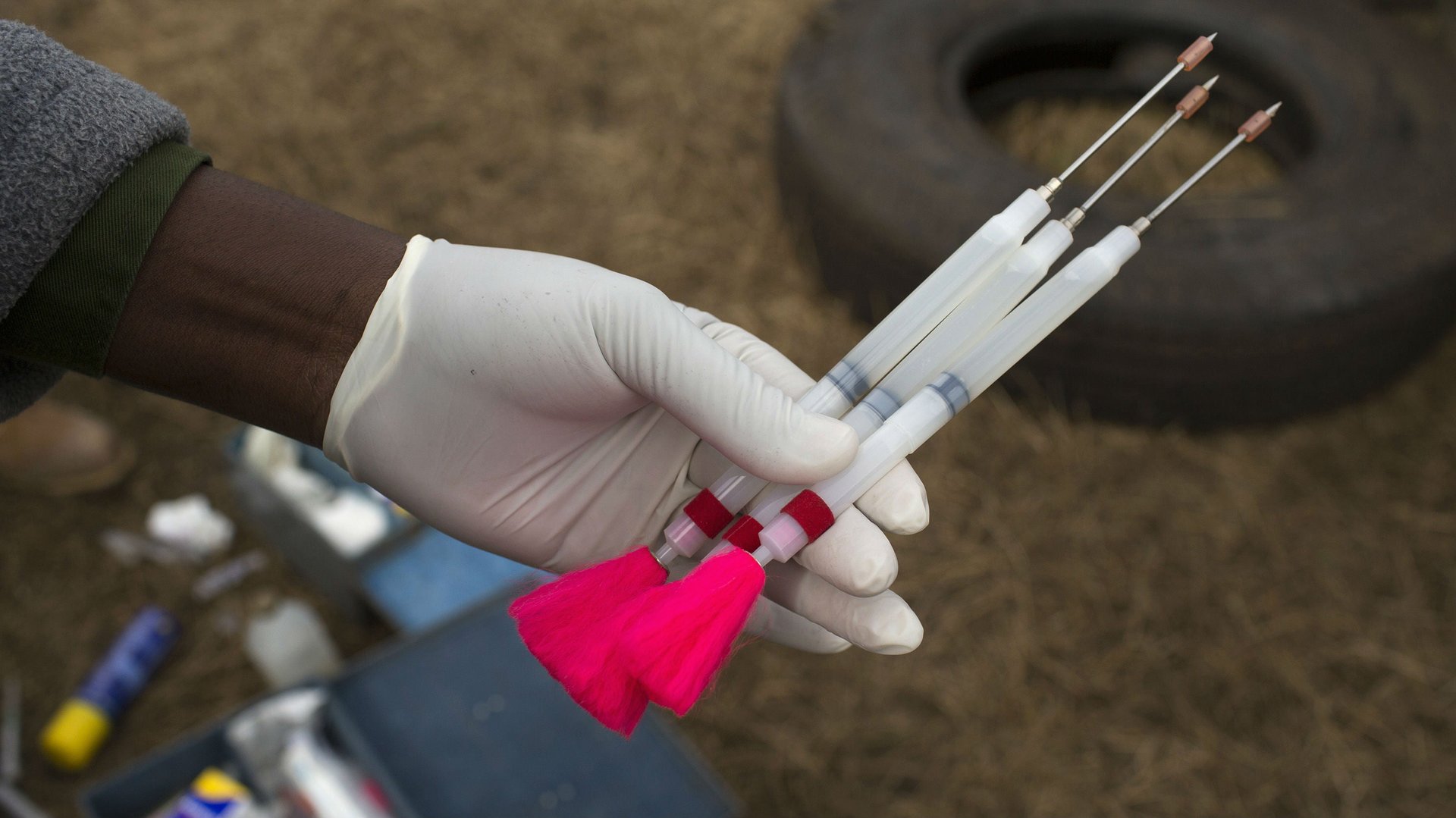Drug dealers are lacing heroin with an elephant tranquilizer over 5,000 times stronger than morphine
Opioid addiction usually starts with prescription painkillers. Drugs like oxycodone (sold as Oxycontin) and hydrocodone (sold as Vicodin) are incredibly addictive because of the way they alter brain chemistry. If patients taking these drugs for normal reasons, like surgery, find themselves addicted, they’ll often turn to heroin for cheaper high. As they build up their tolerance, it’s tempting for them to look for more powerful drugs—which are often lethal. Drug dealers have taken notice of this demand, and have started lacing heroin with an elephant tranquilizer called carfentanil.


Opioid addiction usually starts with prescription painkillers. Drugs like oxycodone (sold as Oxycontin) and hydrocodone (sold as Vicodin) are incredibly addictive because of the way they alter brain chemistry. If patients taking these drugs for normal reasons, like surgery, find themselves addicted, they’ll often turn to heroin for cheaper high. As they build up their tolerance, it’s tempting for them to look for more powerful drugs—which are often lethal. Drug dealers have taken notice of this demand, and have started lacing heroin with an elephant tranquilizer called carfentanil.
Carfentanil is so powerful most vets and zoos keep less than 20 grams of it around at any time. Dogs that catch a whiff of it can die instantly. It’s 100 times stronger than the painkiller fentanyl, which killed Prince, and between 5,000 to 10,000 times stronger than morphine. The equivalent of few grains of salt of carfentanil is enough to kill an adult human.
Carfentanil first came appeared on the US Drug Enforcement Agency’s radar in September 2016, after it started popping up on heroin being sold in Ohio and Indiana. In one 48-hour period, it caused 60 overdoses in those two states, according to local health officials and law enforcement authorities. Now, the Washington Post reports that the drug has killed three people in Maryland.
“It shows how callous these drug dealers are,” Tom Synan, head of the Hamilton County Heroin Coalition in Ohio, told the Post. Adding caftentanil to heroin produces a stronger highs for users, but it also makes it a lot easier to overdose. Although some users are aware that they’re getting more than heroin, others have no idea that they’re injecting themselves with a drug intended for a 15,000 pound animal.
Carfentanil is so strong it can be absorbed through human skin. This poses a particular problem for emergency medicine technicians arriving at the scene of an overdose, who are at risk for becoming ill themselves when treating patients. It’s also overwhelming morgues, who can’t always detect the drug because it’s so new.
“We have never seen death like we do now,” Synan told the Post.